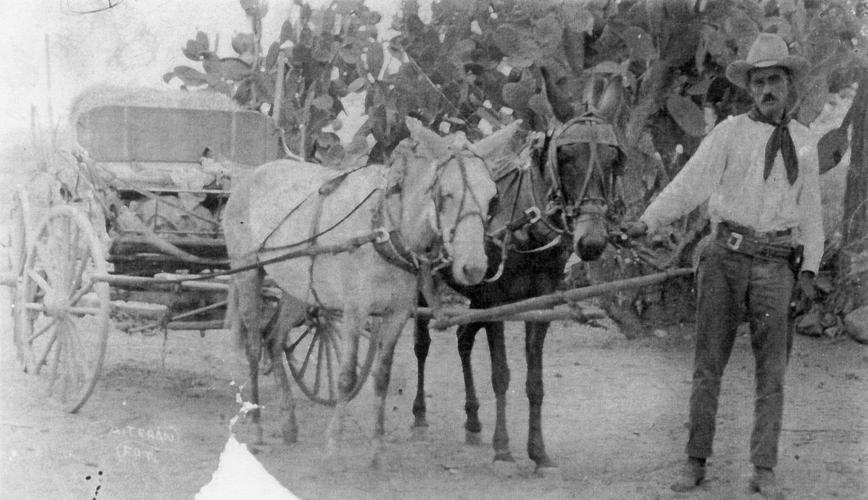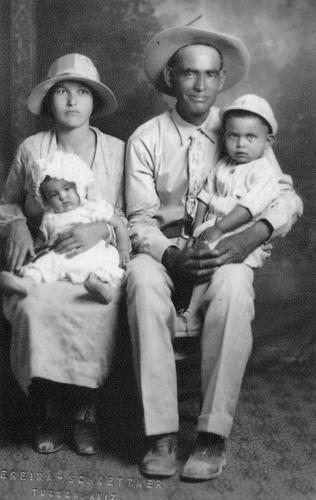Growing up along the fertile Santa Cruz River, surrounded by orchards, furrowed rows of crops, cattle and horses, and with the Santa Rita Mountains seemingly within grasp, Amanda Castillo had an idyllic youth.
She lived on the historic Canoa Ranch, about 35 miles south of Tucson, an expansive land holding owned by Levi Manning, an early 19th century entrepreneur and Tucson mayor, and later his son, Howell Manning Sr. Canoa, in its heyday, was a crown jewel of Southern Arizona with its multiple adorned adobe buildings, and where the Mannings raised purebred cattle and horses.
The Mannings and their massive ranch were known throughout the Southwest.
But it was a ranch built by Mexican vaqueros, cowboys who crossed the line with their families and whose labor maintained the 100,000 acres of ranch land. They were the Ahumadas, Gallardos, Grijalvas, Murriettas, Salcidos, Lopezes and Ortizes.
Castillo’s father, Jesus Salcido, and uncles, Juan and Francisco Salcido, were some of those vaqueros.
“It was their ranch,” Castillo said of the Mannings, “but it was our home.”
Castillo and others who called Canoa Ranch their home want people to know more about their families’ contributions not only to the ranch, but to the life and economy of Southern Arizona.
“We came here and helped develop that land,” said Castillo, who was born in Sasabe, Sonora, south of the Buenos Aires National Wildlife Refuge. “We want to make sure the families are given their recognition.”
That recognition will come in the form of a permanent exhibition to be housed in one of the Canoa Ranch structures — the home where Congressman Raúl M. Grijalva and his family lived when he was a child. The heart of the ranch — which during the Spanish colonial period was the 17,000-acre San Ignacio de la Canoa and before that the home to indigenous people for several thousand years — is now public land owned by Pima County.
Since 2001, when the county acquired 4,800 acres with $2 million of voter-approved bonds, the county’s Natural Resources, Parks and Recreation Department has been restoring the buildings and converting the Raúl M. Grijalva Canoa Ranch Conservation Park into a “living museum.”
The park now has two exhibits on the Manning family and Spanish explorer Juan Bautista de Anza, who stopped at Canoa on his incredible 1775-1776 expedition to California which led to the founding of several missions up to San Francisco. But in October a third permanent exhibition will showcase the contributions of Canoa’s vaquero families.
The ranch is seeking memorabilia from Canoa families to be part of the exhibition. Family photographs. Ranching tools. Household objects. Items that tell a story of hard work, celebrations, life on the ranch.
“It’s hard to rebuild Canoa’s history because many memories are gone,” Castillo said.
Castillo calls Canoa a Mexican-American Ellis Island. Through the ranch came Mexican families with their universal values of hard work and education. This history, which is not told in public schools, is essential to understand Southern Arizona — then and today, said Castillo, a retired Tucson librarian.
Off the ranch, the families faced rejection and the children were forbidden to speak Spanish at the nearby school in Continental. But on the ranch the families bonded together, shared the work and helped one another. The families planted their gardens, hunted rabbits for meat, and rats that were sold to the University of Arizona science labs, caught fish in the pond (which no longer exists) to eat and to sell to seasonal workers who picked cotton, and they made jams, chorizo and calabaza empanadas.
“It was all slow food and sustainability,” said Castillo.
The vaquero family exhibition is likely to be the first of its kind in Southern Arizona, which was dotted with numerous ranches and untold thousands of ranch hands and their families who strung the wire, rounded up the cattle, tilled the soil and grew the crops which fed the region. Castillo said recognizing their history is long overdue.
“We need to preserve the little history that is left.”









